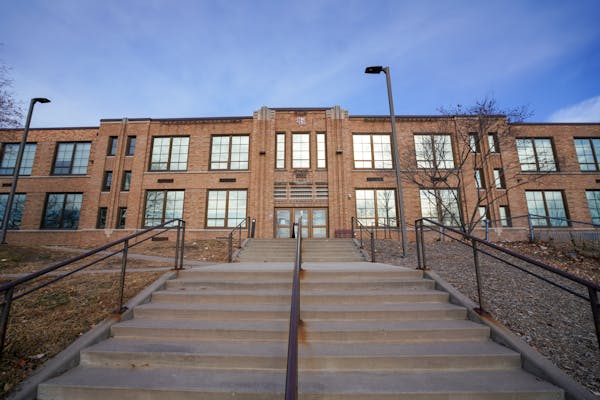The Minnesota Department of Human Services recently removed a Hmong translation on its Facebook page after receiving complaints from Hmong community members and academics that the translation was confusing and riddled with errors.
Bee Vang-Moua, director of the Hmong language program at the University of Minnesota, shared the department's post on her Facebook account, pointing out problems with the Hmong translation. It was too literal, she wrote, adding that no Hmong elder would be able to understand it.
"The translations are very, very literal," Vang-Moua said. "If anyone knows anything about translation, it's never about literal translation. It's always about conveyance of the meaning and it's also about language access."
"There needs to be greater quality control, particularly from our public institutions," said Lee Pao Xiong, director of the Center for Hmong Studies at Concordia University in St. Paul. "This is not the first time that we're seeing this from a public institution, and it's outright insulting that you don't take care to have somebody take a look, have a second eye on the translation."
The text of the message, which was posted in five languages on Feb. 5, was a reminder to those with Medical Assistance or MinnesotaCare to update their address and other personal information to avoid coverage interruptions. Native speakers and Sahan Journal staffers who reviewed the other translations — Somali, Vietnamese, Russian, and Spanish — identified problems with the Somali translation, but found the rest essentially accurate.
The English text of the message read: "Covered by Medical Assistance or MinnesotaCare? Don't risk a gap in your health insurance. Keep your address, phone number and email updated." It included a web link to the department, which provides health and economic assistance to Minnesotans who qualify.
Vang-Moua said the text was incomplete in the Hmong version and contacted the department. The news organization Hmong American Experience shared Vang-Moua's Facebook post, spurring dozens of comments criticizing the translation.
Human Services officials posted a note on Facebook saying they had received notice of "significant errors" in its translation, and was working to correct them. They said the department was working with a new translation service.
In a statement to Sahan Journal, Human Services officials said the Hmong post was an old translation and that it had been mistakenly reposted without updating. The translation was posted four times as far back as December 2022, but hadn't received negative feedback until the Feb. 5 post.
"DHS acknowledges that we need to improve Hmong, Somali and all translations and we will continue to revise content to correct errors," according to the department's statement. "We recognize the need to provide more oversight and quality assurance on vendor work."
Some expressed concerns about whether services like Google Translate were used, but Human Services officials said the department contracts with third party translation services.
The service responsible for the Feb. 5 translation was Atlanta-based LATN Language Solutions, according to the department. It has contracted with LATN since 2018, but sought a new service after LATN's translations came under scrutiny by employees and community members before the recent Facebook posts. The department stopped using LATN as its primary translation service for public content in April 2023, but still uses LATN's services internally. LATN did not respond to requests for comment.
Department officials said they have since been working with Minneapolis-based translation service Latitude Prime for its Hmong translations. Translations from Latitude Prime are reviewed by someone who is knowledgeable about the subject matter and is a community member fluent in the translated language and English, according to project manager Emma Yardley.
"It really does take a look at the relevance of the translation in that local area to ensure that it reflects the dialect, and that it's culturally appropriate," Yardley said. "A vendor located in a different state isn't necessarily going to have the resources locally to translate it and do the community review that's necessary."
Though Vang-Moua said bad Hmong translations aren't widespread in Minnesota, she tells her students to let the committee or organization know when a translation is bad. "I give extra credit to my students for taking the initiative to fix these things," she said.
Because Hmong is a tonal language, one small error in a translation can completely change the meaning of a word, Vang-Moua said. However, she stressed that difficulties in translation can largely be circumvented by hiring experienced, formally trained translators.
Dialectical differences between Hmong speakers are another aspect to consider when it comes to translations. According to Xiong, most public institutions translate English into the White Hmong dialect, known as Hmong Der, while many Minnesotans speak the Green Hmong dialect known as Hmong Leng. Though most Green Hmong speakers can read White Hmong, according to Xiong, not everyone can.
Xiong said he's received requests from organizations across the country to review their Hmong translations, and often tells them they need to completely retranslate the content. He suspects that many translation errors are the result of companies and agencies contracting with younger Hmong speakers who may not be formally trained.
"They know how to market to the translation companies and all that stuff, and they're getting these contracts to translate these complex subject matters," Xiong said of the younger translators. "They don't know anything about it; they don't have the vocabulary for it."
Freelance journalist Abdirizak Diis contributed to this report.
About the partnership
This story comes to you from Sahan Journal, a nonprofit newsroom dedicated to covering Minnesota's immigrants and communities of color. Sign up for a free newsletter to receive Sahan's stories in your inbox.

Minnesota Power agrees to smaller bill increase for customers in settlement

Could a big week for St. Paul's Union Depot hint at a brighter future?

Minneapolis English teacher named Minnesota Teacher of the Year 2024

University of Minnesota students race to … eat lettuce?

